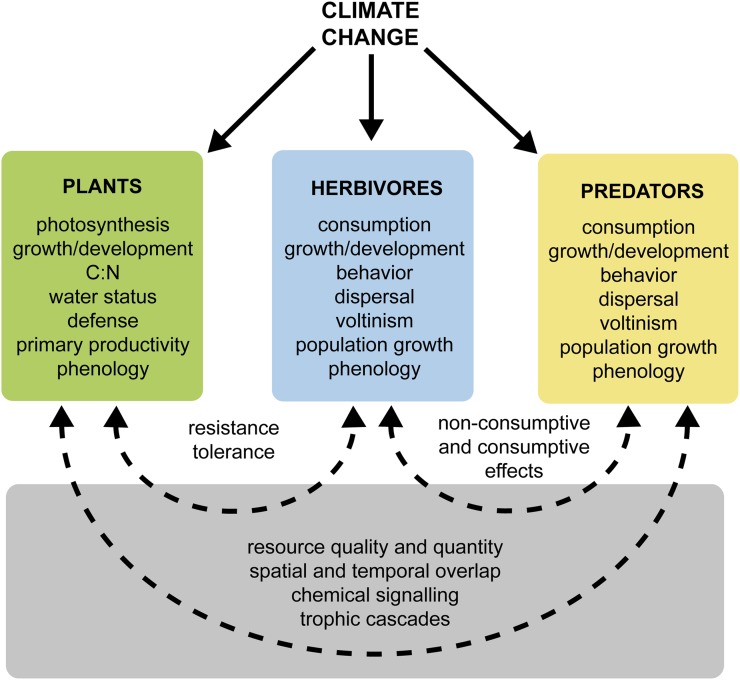Figure 1.
Key traits and processes underlying the response of plants, insect herbivores, and higher trophic level organisms to climate change. Solid arrows represent direct effects of climate change on species traits (in boxes). Dashed arrows represent indirect effects resulting from altered trophic interactions (traits along arrows). The gray box highlights indirect effects that can influence species interactions between and across trophic levels. At the organismal level, direct effects are driven by modifications in climate-sensitive metabolic and physiological processes. At the population level, altered mortality and reproduction due to climate change can affect population growth and drive evolutionary change. At the community level, shifts in spatial and temporal distributions of interacting species may alter resource availability and quality for consumers and top-down controls on plant productivity. In turn, these direct and indirect effects may lead to cascading and feedback effects on ecosystem level traits, including carbon sequestration and net ecosystem production.

